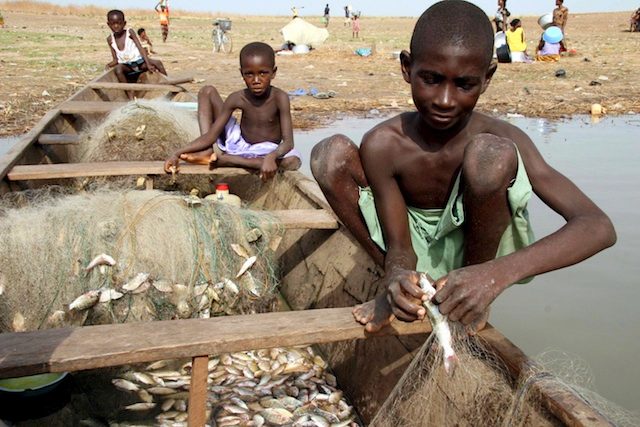SUMMARY
This is AI generated summarization, which may have errors. For context, always refer to the full article.

TURIN, Italy – While we no longer see people walking in chains, “very hidden” forms of slavery persist even in developed countries, a labor rights expert warned a group of journalists.
In Africa, for instance, many children continue to be born as slaves, Houtan Homayounpour of the International Labor Organization (ILO) said Wednesday, November 4.
“We have family after family, generation after generation, still being slaves. From the day that a child is born, they’re born as slaves, because their parents, their grandparents, are slaves, and they’re owned by another family. We have this still in Africa,” Homayounpour said.
More shocking, he said, is this: “They don’t consider themselves slaves.”
“They say: ‘What are you talking about? This family provides me with food and housing, and I work with them. It’s a working relationship that we have, and I’m not a slave,” the ILO official said in a video conference at the ILO’s International Training Center in Turin.
Speaking to participants of an ILO-sponsored course on labor rights, Homayounpour wanted to prove that slavery exists in the 21st century.
The ILO’s Forced Labor Convention of 1930, or Convention No. 29, defines forced labor as “all work or service which is exacted from any person under the menace of any penalty and for which the said person has not offered himself voluntarily.”
Homayounpour said that unfortunately, many people, including his friends, think that slavery no longer exists because they “have never seen anyone in shackles or chains, their hands tied down to the floor or to the table.”
‘There are no chains’ but…
He pointed out: “There are no chains. They are walking around freely. But very often, psychologically, they’re chained to someone or something. Very often, they’re told, ‘If you do not follow my orders, your father and mother and your village may get hurt. Your son or your daughter may be killed.’ So they have to follow the order.”
Latest data from the ILO show that globally, up to 20.9 million people remain victims of forced labor.
Forced labor is most prevalent in non-European Union (EU) states in central and southern Europe, and the Commonwealth of Independent States. In this region, the prevalence of forced labor is 4.2 for every 1,000 inhabitants.
This is followed by Africa, with 4 per 1,000 inhabitants engaged in forced labor.
Other regions have the following prevalence rates for forced labor:
- Middle East – 3.4 per 1,000 inhabitants
- Asia and the Pacific – 3.3 per 1,000 inhabitants
- Latin America and the Carribean – 3.1 per 1,000 inhabitants
- Developed economies and the EU – 1.5 per 1,000 inhabitants
Homayounpour said, “The one thing that I really hope to do today, with you, is to create this doubt in your minds, If you don’t already have the doubt in your mind, that forced labor exists in every single country in the world.”
“Many people are of the opinion that slavery has been eliminated,” he said. “Well, let me be very honest and frank with you: Unfortunately, that is not the case at all.” – Rappler.com
Add a comment
How does this make you feel?
There are no comments yet. Add your comment to start the conversation.